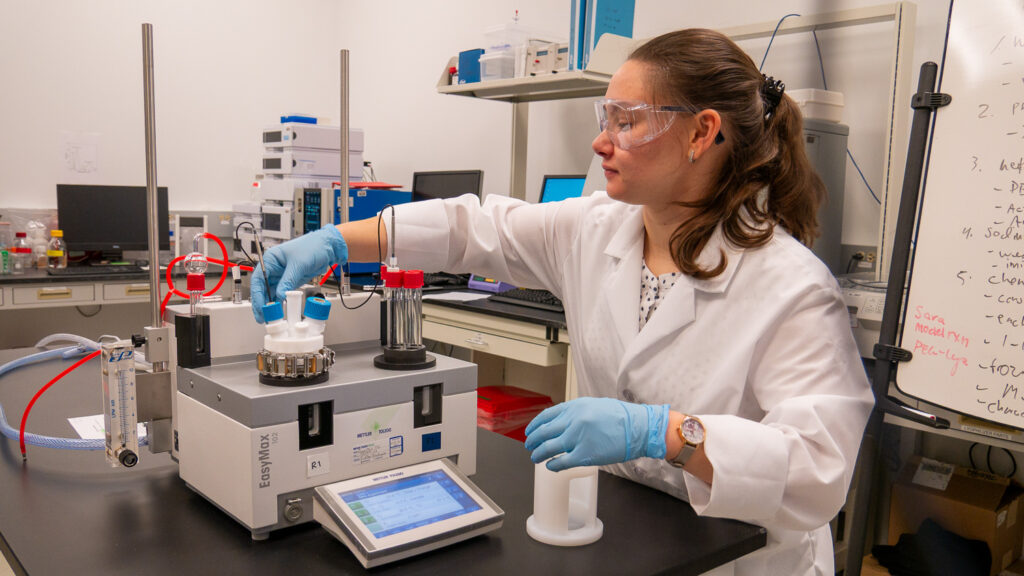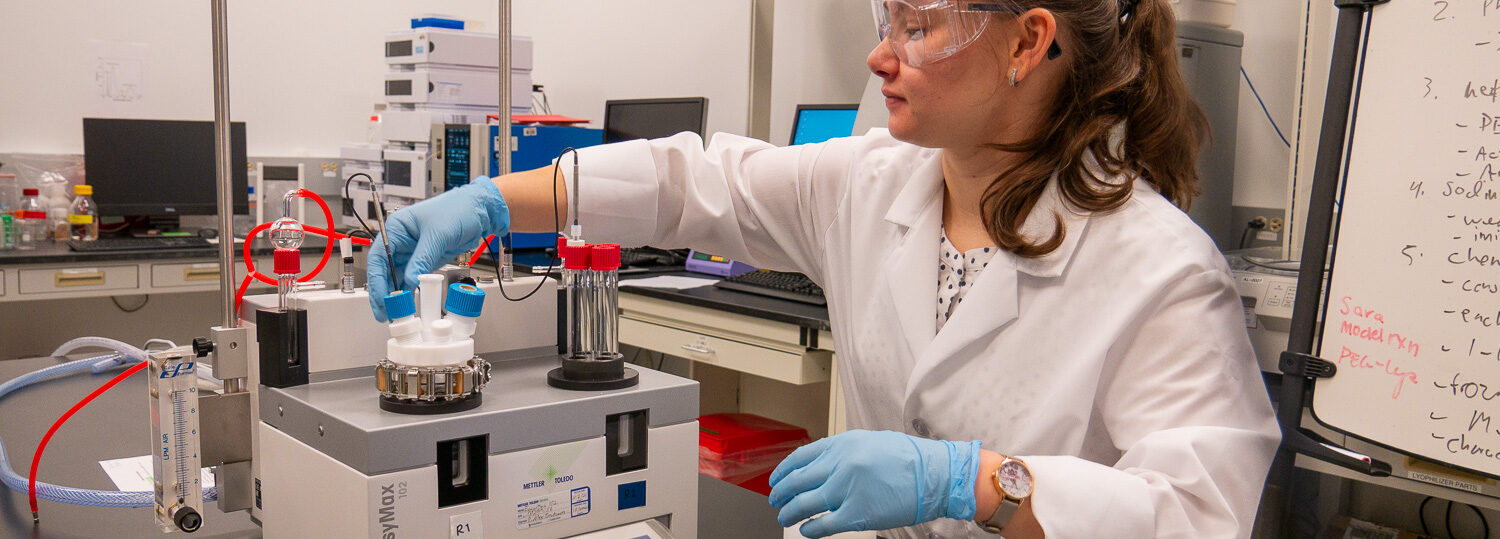
Therapeutic proteins, the largest class of biopharmaceuticals, offer life-changing treatments such as enzyme replacement therapy, which can treat a variety of cancers and metabolic disorders. They are commonly produced using genetically engineered cells, and the chemical modification of these useful proteins can improve their safety and efficacy. For example, therapeutic proteins can be PEGylated (polyethylene glycol attached to improve the systemic circulation half-life) or conjugated to a cytotoxic moiety (for targeted treatment of cancer, as in the case of antibody-drug conjugates (ADCs)). BTEC offers a Chemical Modification of Protein Therapeutics course which covers the essentials of chemical modifications, safety profiles, purification and analysis, and has now been updated to highlight the site-specific conjugation and linker chemistry behind the clinical successes of third-generation ADCs.
Antibody-drug conjugates represent perhaps the most significant example of modified protein therapeutics
These ADC drugs combine the specificity of antibodies with highly effective chemotherapy drugs directly to cancer cells, rather than allowing them to circulate freely in patients’ bodies. By targeting the therapy, ADCs can use stronger cytotoxic drugs than traditional chemotherapy, improving patient safety and drug efficacy. The new online course module for Chemical Modifications of Protein Therapeutics explores site-specific conjugation and linker chemistries using the ADC — one of the fastest growing classes of oncology drugs1 — as a model protein therapeutic. The new content explores the differences between stochasticity (i.e., random attachment of drug molecules to the antibody) and site-specificity, available protein reaction sites and their targeting chemistries, and different options for linkers. Course participants will gain a greater understanding of the decision points and logic behind the design of ADCs.
Antibody-drug conjugates and other chemically modified protein therapeutics are poised for expanded commercial opportunity
It is likely that the popularity of chemically modified drugs will continue to grow due to the numerous ways that exist to improve the efficacy and safety profiles relative to the unmodified drug. Furthermore, there will soon be commercial opportunity for biosimilar development in this space. Of the 15 FDA-approved ADCs, patents for six will expire between 2026–2033 with no reported development2.
In addition to the ADC boom, many of the blockbuster GLP-1 drugs such as semaglutide are acylated by a chemical modification process that extends their half-life and improves their efficacy. This market will be ripe for follow-on competition in the United States around expiration of patents in 2038.
Presently, 32 FDA-approved PEGylated compounds are on the market, many of which are already off patent with more set to expire2. Their functionality has been proven to increase circulation half-life, decrease immunogenicity and increase biodistribution. Many of these drugs have a smaller share of the market, but PEGylation is also being investigated in pre-clinical settings for improving efficiency of drug and gene delivery by nanoparticles and AAV-based gene therapies3,4. New modalities, such as antibody-RNA conjugates (ARC), are also on the horizon and will likely require similar process development cycles for their eventual manufacture5.
Expand your knowledge of chemical modifications of protein therapeutics
BTEC’s self-paced, online course on Chemical Modification of Protein Therapeutics highlights PEGylated proteins and antibody drug conjugates as examples of clinically relevant chemically modified protein therapeutics. It is available on demand and is suitable for individuals with some knowledge of biochemistry and bioprocessing who are interested in specialized chemistry and process considerations. The course examines the background and application of chemical modifications; considers manufacturing methods; presents analytical/characterization methods; and addresses process optimization as well as providing new material on ADCs.
1 Gampenrieder, S.P. Antibody–drug conjugates (ADC special)—part 1. memo 17, 75–76 (2024). https://doi.org/10.1007/s12254-024-00974-w (opens in a new window)
2 IQVIA Institute for Human Data Science, Aitken, M., Davies, C., Kleinrock, M., Palmer, S., Porwal, U., & Tewary, V. (2025). Assessing the biosimilar void in the U.S.: Achieving sustainable levels of biosimilar competition. In IQVIA Institute for Human Data Science [Report]. https://www.iqviainstitute.org (opens in a new window)
3 Mishra, L. et al. (2025). PEGylated Nanocarriers for Gene Therapy. In: Tekade, R.K., Jain, N.K. (eds) PEGylated Nanocarriers in Medicine and Pharmacy. Springer, Singapore. https://doi.org/10.1007/978-981-97-7316-9_8 (opens in a new window)
4 Earley, J., Piletska, E., Ronzitti, G., & Piletsky, S. (2023). Evading and overcoming AAV neutralization in gene therapy. Trends in biotechnology, 41(6), 836–845. https://doi.org/10.1016/j.tibtech.2022.11.006 (opens in a new window)
5 Cao, W., Li, R., Pei, X., Chai, M., Sun, L., Huang, Y., Wang, J., Barth, S., Yu, F., & He, H. (2022). Antibody–siRNA conjugates (ARC): Emerging siRNA drug formulation. Medicine in Drug Discovery, 15(100128). https://doi.org/https://doi.org/10.1016/j.medidd.2022.100128 (opens in a new window)
